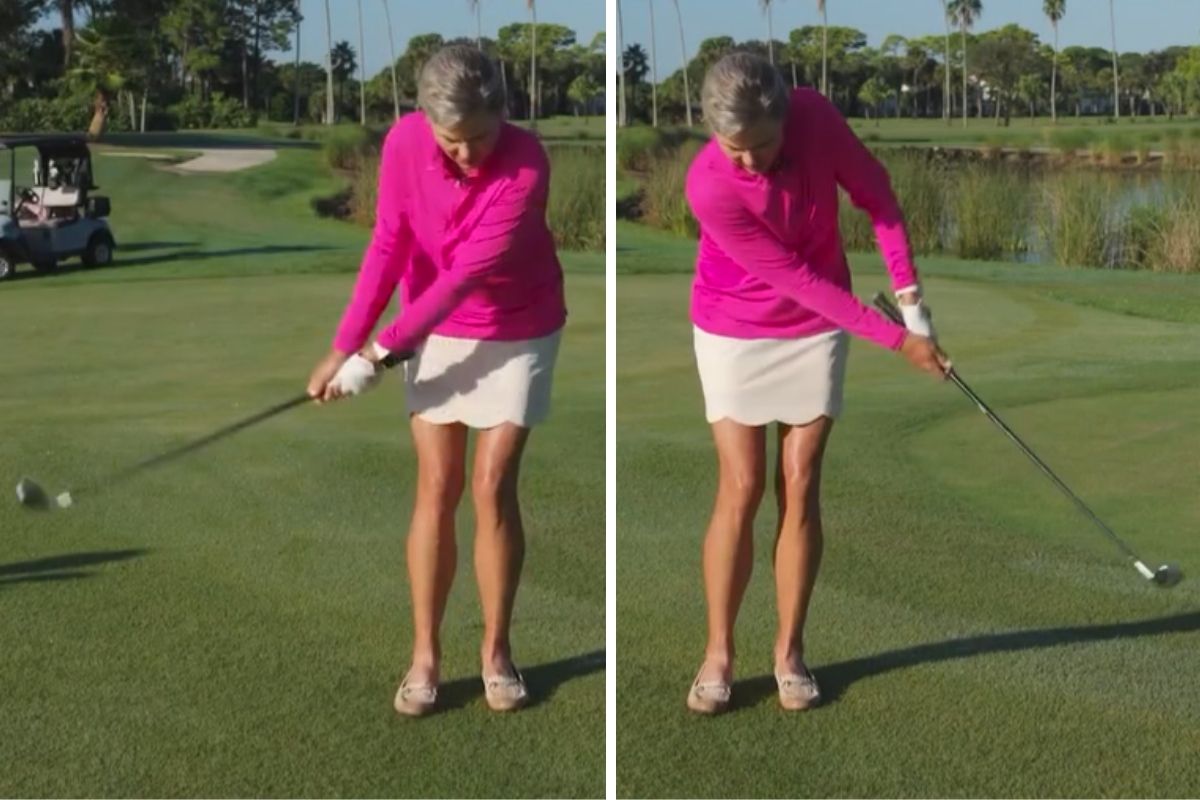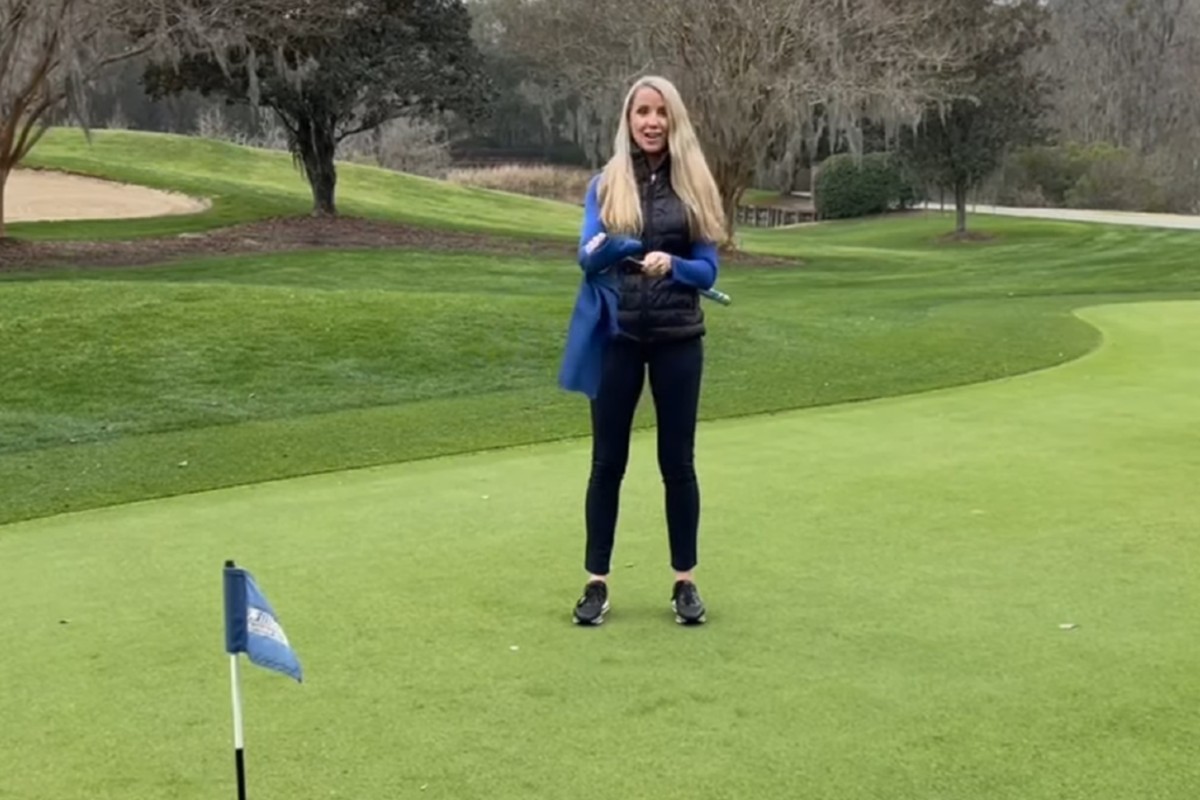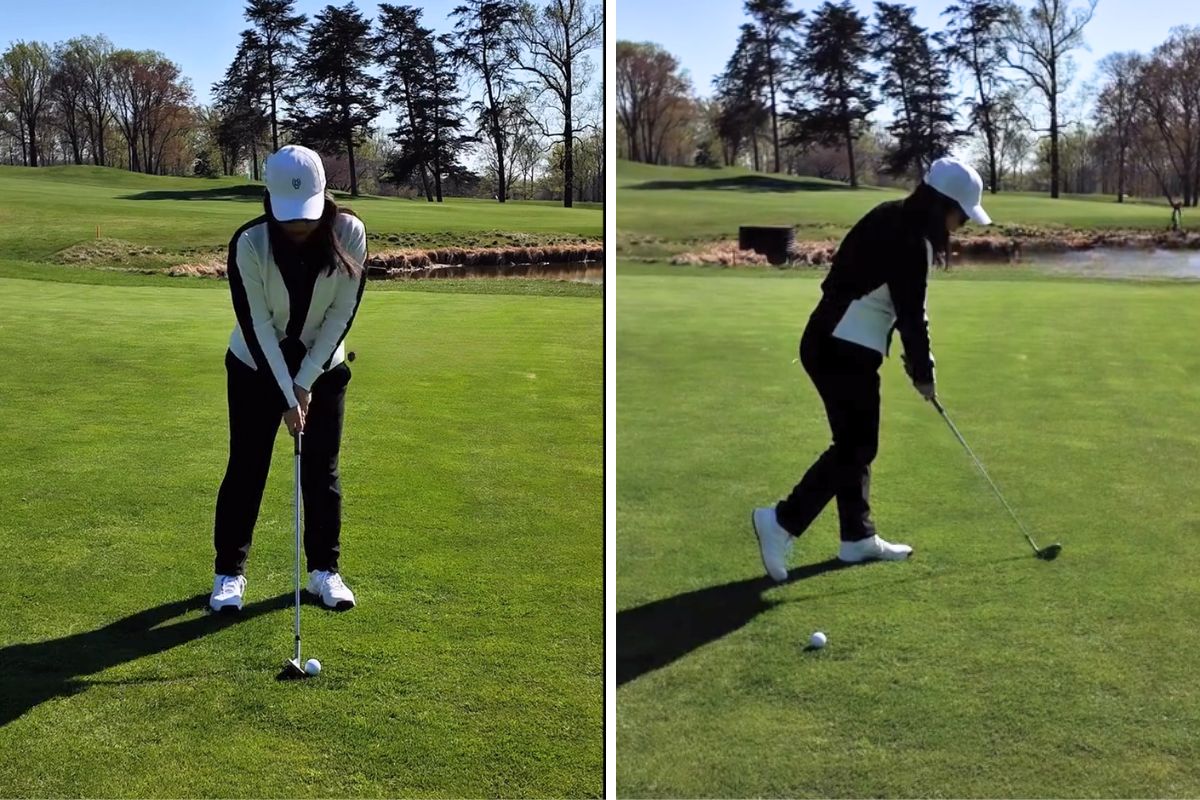By following the lessons in this course, you will gain the mental and practical tools needed to be less nervous and more resilient, ultimately improving your performance.
You can choose between immediate access to all lessons on this page or receive them through a weekly email sequence. Immediate access is great if you want to dive in and progress at your own pace, while the email sequence allows you to take your time and focus on one lesson each week. If you would like to receive them one at a time please use our contact form.
Lesson 1: Setting Your Intention and Goals Before Your Round
A successful round starts long before you tee off – it begins with setting the right intentions and focusing on achievable process goals.
In this lesson Debbie O’Connell emphasizes the importance of setting your intention before each round and focusing on process goals that are within your control.
With your intentions set, let’s explore how visualization techniques can further enhance your performance on the course.
Lesson 2. Visualization Techniques
Mental rehearsal is a powerful tool for golfers. See your perfect shots before you even step onto the tee.
Anne Rollo and Dennise Hutton show how to visualize your golf shots before you play them. This technique is simple and easy to do and can make a significant difference to your scores.
Now that you can see yourself succeeding, learn how to handle the pressure and distractions that inevitably arise during a round.
Lesson 3: Handling Pressure and Distractions
Nerves are natural, but they don’t have to control your game. Learn to manage pressure and distractions for peak performance.
Director of Instruction at West Bay Club, Katie Dahl’s tips to help you play great despite the nerves you feel on the first tee. Learn how to handle pressure like a pro.
If you’ve ever been nervous on the first tee, you are in good company. From beginners to scratch golfers, no one is immune to feeling anxiety and pressure at the start of a round. Instead of just hoping your first shot hits the fairway, here are some strategies we can learn from the pros to set ourselves up for success.
Rehearse on the Range
At the end of your warm-up session, play your first tee shot on the range. What I mean by this is imagine the hole in front of you and create your own “fairway” that you are aiming for. Pick a specific target and do your full pre-shot process. This strategy gives you a chance to see yourself having success with your opening drive and also warms your MIND and not just your body up for what you’re about to do on the course. The next time you see LPGA or PGA Tour players on TV practicing on the range, notice that they use their routines too, we can learn from their example.
Re-Focus Your Attention
I hear it all of the time from golfers I teach, they are ready for a good round until they find out they are paired with someone they don’t know or someone with a low handicap. Here’s a little secret: that golfer you are paired with, even if they are a professional, is more concerned with THEIR game and performance than yours. When you feel like all eyes are on you, it’s time to re-focus your attention. You can’t make a great swing worried about what others will think. Instead, shift your focus to your target. Where do I want to send this ball? What will it feel like when I crush it down the middle?
Relax Physically
Last but not least, it’s important to relax your arms and shoulders before you swing. Tension can rob us of great technique and rhythm. If you hit it great on the range but struggle on the course then this is for you. An easy way to check your tension levels is to add some movement before you take the club back. Bounce your legs, waggle the club slightly. Imagine a tennis player ready to return a serve, a pitcher up to bat, or a basketball player preparing for a free throw- in all of these scenarios there is some motion and relaxed ready athleticism before they press GO, golf is no different.
The next time you feel nervous on the first tee, know that it’s very normal and with the right strategies you can feel prepared to play great DESPITE the nerves. The things you do to prepare yourself by rehearsing, re-focusing your attention, and relaxing before teeing off will set you up for success and more fun when you play.
Controlling your emotions is crucial for consistent play. In the next lesson, we’ll explore strategies for regulating your emotions on the course.
Lesson 4: Regulating Your Emotions on the Golf Course
Don’t let frustration derail your game. Learn how to manage your emotions and stay focused on the task at hand.
Feeling angry or frustrated when you play? Dr. Alison Curdt has 5 steps to get you handling your emotions on the golf course.
Finally, we’ll bring it all together with ten powerful ways to beat your nerves and play with confidence.
Lesson 5: Ten Ways to Beat Your Nerves on the Golf Course
Conquer your nerves and unlock your true potential on the golf course.
LPGA Master Professional, Deb Vangellow helps you to identify and understand what happens to you when you get nervous playing golf.
Nervousness. It is inevitable. All the great ones have felt it…in every athletic endeavor that means something to them. Champions learn how to deal with the effects of nervousness and may even be addicted to them. If you can understand what is happening to your body during these times, you can make nervousness your ‘friend’.
Identify and understand what happens to you when you suffer from nerves on the golf course. Then, work on ways that you can combat these nerves…things that work for YOU. Stress is healthy and nervousness is common and ‘normal’. Here are some ideas to help:
- Slow down. The more you hurry, the worse it could get.
- Keep it simple. Don’t overload yourself with swing thoughts or a complicated strategy.
- Stay fit. If you are in shape, your nerves will be too. Besides exercise, watch your eating habits and stay with what works for you.
- Keep it predictable. On tournament days, stick you your usual habits and be yourself. Following a set routine isn’t just a good idea for your daily regimen, it is ideal for every shot.
- Rely on social support. Interaction with playing partners and friends may help you react better to stress.
- Don’t think about the consequences or outcomes. Think target rather than technique.
- Think happy. Think only positive things, even if they are unrelated to the shot at hand. A positive thing you can think of when playing is a successful shot…use visual imagery to “see this” perfect shot before you swing.
Dr. Bob Rotella noted sports psychologist says that the key is to “trust the human machine”—the built-in responses your body makes when you feel the pressure. Great players get nervous…their hearts beat faster and their hands shake just like everybody else’s. It is the feeling of champions!
Keep it all in perspective. If the pressure gets to be too much, tell yourself that what is happening isn’t so important. This is, after all, a game. And, it is a choice to play this game.
When things go bad, blame bad luck and get on with it. There is an element of luck beyond your control and those who cope best with stress know how to turn this into an advantage: make a great putt, know it was a great stroke, miss a short putt, blame it on the spike mark.
Train your stress response. Know yourself and be your own best coach. Learn to limit stress response to those moments immediately surrounding the shot. Try to get “away” between shots and learn to turn the sense of pressure on and off. Many players use biofeedback, relaxation techniques, or meditation to control nerves. Additionally, distract yourself between moments of stress by doing something irrelevant to the task at hand (looking at a note in your pocket, picking up a twig, arranging your bag contents) and this may have a steadying effect on your nerves.
Congratulations! You’ve now equipped yourself with the tools and techniques to build lasting confidence on the golf course. Go out and play your best!










